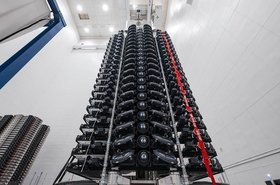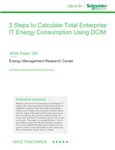The Federal Communication Commission (FCC) is considering changing its requirements around end-of-life disposal of satellites in order to reduce space debris.
First reported by SpaceNews, the FCC recently outlined the agenda for upcoming the September open Commission meeting.
In it, the Commission will consider adopting rules requiring LEO operators to dispose of satellites no more than five years following the end of their mission, and ideally ‘as soon as practicable’.
The rule would apply to satellites launched two years after the order is adopted, and include both US-licensed satellites as well as those licensed by other jurisdictions but seeking US market access.
Currently there are no firm rules for de-orbiting LEO satellites, but the FCC usually licenses satellites with an indsutry-standard 25-year rule used in both international orbital debris mitigation guidelines and US government standard practices.
“We believe that a five-year post-mission orbital lifetime strikes an appropriate balance between meaningfully reducing risk while remaining flexible and responsive to a broader selection of mission profiles," the FFC said.
The new five-year rule comes after the FCC delayed consideration of a similar rule in April 2020. FCC commissioners elected then to get more feedback on a potential change to the 25-year guideline
The trouble is, there is already a lot of debris up there. In 2020, NASA’s Orbital Debris Program Office warned that reducing the post-mission lifetime from 25 years to 5 years would result in only a 10 percent decrease in the orbital debris population over 200 years, which is said “is not a statistically significant benefit.”
This month also saw the American Institute of Aeronautics and Astronautics (AIAA) publish its own Satellite Orbital Safety Best Practices guide developed in cooperation with Iridium, OneWeb and SpaceX which recommends that satellites deorbit within five years of the end of life, with a goal of one year either through natural orbital decay or active measures.
Where Geostationary Earth Orbit (GEO), located at 35,786 kilometers (22,236 miles) above the Earth, is heavily regulated, LEO (below 2,000 km/ 1,200 miles) is less tightly controlled. End-of-life GEO satellites usually save enough fuel to propel themselves up higher into what is known as a ‘graveyard orbit’ out of the way of live satellites.
LEO satellites, however, are often left to naturally fall out of orbit via the Earth gravitation pull. This can take several years, if not decades, with defunct machines a potential hazard for any satellites or space stations in orbit. Travelling at thousands of miles per hour, any collision would be a major event potentially creating huge amounts of debris, creating further risks.
While rare, collisions in space do happen. In February 2009 the Russian military satellite Kosmos-2251 collided with the Iridium 33 communications satellite [also known as a ‘conjunction event’]. Traveling at speeds of 26,000 miles per hour, the two satellites were destroyed, creating a cloud of 1,800 large pieces of space debris, each capable of destroying any spacecraft they hit. Much of the debris remains in orbit today.
In April 2021, a defunct US meteorological satellite and a rocket body launched in 1971 by the former Soviet Union to deliver a satellite into orbit came within 21 meters of each other, narrowly avoiding a major collision. In 2020 a Soviet Parus navigation satellite launched in 1989 narrowly missed a Chinese rocket booster launched in 2009.
Around 28,200 pieces of space junk and debris are being tracked in orbit, but the European Space Agency (ESA) estimates the actual number is much higher; warning there could be up to 34,000 objects greater than 10cm, 900,000 objects between 1-10cm, and 128 million smaller than 1cm. The total weight of the debris is estimated to be around 5,000 tons.
In 1978, Nasa scientist Donald Kessler predicted a scenario where the space around Earth is so full of satellites and debris that it becomes unmanageable and collisions begin to cascade, causing a chain reaction which would render many orbits out of use for generations. Kessler syndrome is not yet a fact, but still presents a major risk for satellite operators.







